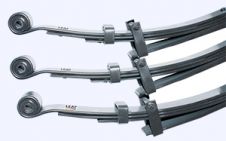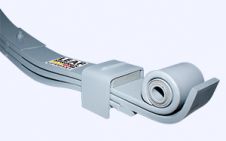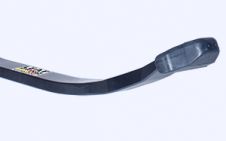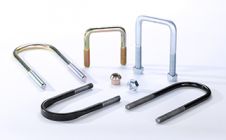Conventional leaf springs
Several identical leaf springs (spring layers) of different lengths are stacked in layers to form a spring package held together by a common center bolt and spring clip. Friction causes a desired natural damping between the layers during absorption, which previously even removed the need for vibration dampers. This effect can be reduced or enhanced by inserting plastic leafs or rubber buffers. 55Cr3 with tensile strengths of 1400 – 1700 MPa is generally used as spring steel.









